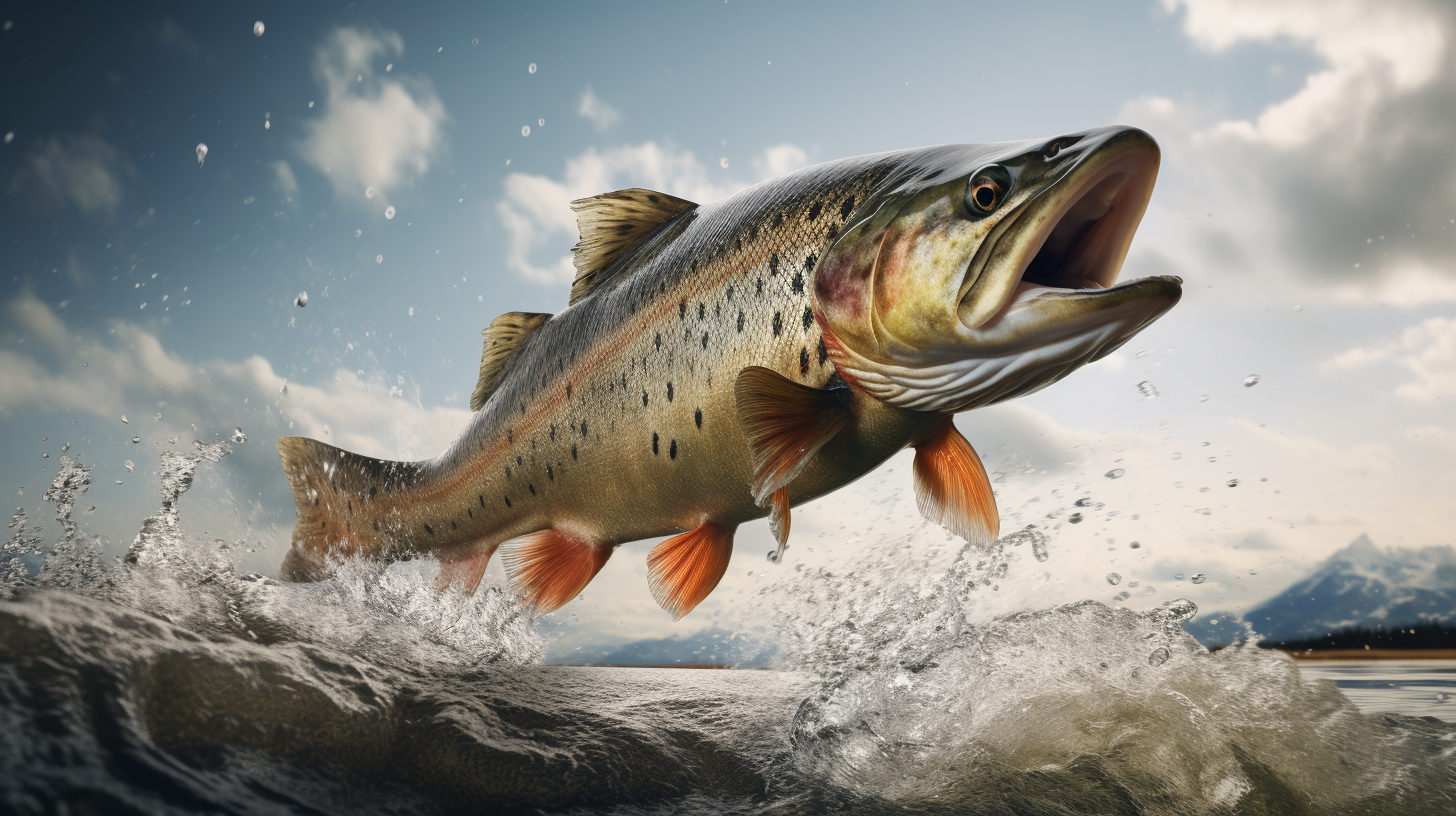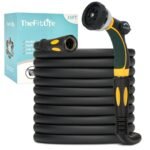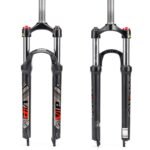Trout is a type of freshwater fish that is highly prized by anglers for its fighting spirit and delicious taste. With a sleek body and distinctive coloring, trout can be found in streams, rivers, and lakes throughout the world. Whether you’re a seasoned pro or a beginner, catching a trout can be a thrilling experience that requires skill, patience, and a bit of luck.
One of the most important factors in catching trout is understanding their habitat. Depending on the species, trout can be found in cold, clear water with plenty of oxygen and cover. They are often found in areas with fast-moving currents, such as riffles and runs, as well as deeper pools and eddies. By knowing where to look for trout, you can increase your chances of success and have a more enjoyable fishing experience.
Read More OutdoorGoodness Articles
Another key to catching trout is understanding their diet. Depending on the location and time of year, trout may feed on a variety of insects, crustaceans, and small fish. By using the right bait or fly and presenting it in a way that mimics natural prey, you can entice trout to bite and increase your chances of a successful catch.
Key Takeaways
- Understanding trout habitat is essential for catching this fish type.
- Knowing what trout eat can help you choose the right bait or fly.
- With patience, skill, and a bit of luck, catching a trout can be a thrilling experience.
Habitat: Where to Find This Type of Fish
Trout is a freshwater fish that can be found in various habitats around the world. They are popular game fish due to their beauty, fighting spirit, and delicious taste. Here are some of the common habitats where you can find different species of trout:
- Streams and Rivers: Trout are often found in cold, clear streams and rivers. They prefer water with a high oxygen content and a moderate to fast flow. They can be found in both small and large streams, from tiny mountain brooks to big rivers like the Yellowstone.
- Lakes: Trout can also be found in lakes, especially those that are deep and clear. They prefer water temperatures between 50 and 60 degrees Fahrenheit. They can be found in both natural and man-made lakes, including reservoirs and ponds.
- Ponds: Trout can be found in ponds that are stocked with them. These ponds are often found in parks, recreational areas, and private properties. They can be a great place to catch trout if you don’t have access to a river or lake.
- Coastal Waters: Some species of trout, such as steelhead and sea-run cutthroat, can be found in coastal waters. They spend most of their lives in the ocean but return to freshwater to spawn. They can be found in estuaries, bays, and rivers that flow into the ocean.
Trout are found in various habitats around the world, including North America, Europe, Asia, and South America. They are often found in areas with a cool climate and clean water. Some species of trout, such as the brown trout, have been introduced to new habitats and can now be found in many parts of the world.
In summary, if you want to catch trout, you need to know where to find them. They can be found in streams, rivers, lakes, ponds, and coastal waters. Look for cold, clear water with a high oxygen content and a moderate to fast flow. Trout are a beautiful and delicious fish that can be a lot of fun to catch.
Diet: The Secret to Catching This Fish Type
Trout are carnivorous fish that eat a variety of prey, including insects, crustaceans, and small fish. Understanding their diet is crucial to catching more trout.
Insects
Trout’s diet is primarily comprised of insects that “hatch” out underwater and ascend through the water column to the surface of the water as larvae then pupae and emerged as adult insects. Mayflies, caddis flies, stoneflies, and midges all follow this classic pattern and make up large parts of trout diets in most areas. It’s important to match the hatch and use the right fly to mimic the insects that are currently available in the water.
Crustaceans
Trout will also eat crustaceans, especially big trout. The two primary crustaceans that trout eat are crayfish and scuds. Crayfish are a favorite food of trout, and fishing with crayfish imitations can be very effective. Scuds, also known as freshwater shrimp, are another important food source for trout, especially in streams and rivers.
Small Fish
Trout will also eat small fish, including minnows, shiners, and dace. When fishing for trout with lures, it’s essential to use lures that mimic the size and color of the small fish in the area.
Other Foods
Trout will also eat other foods, including leeches, snails, and even small rodents that fall into the water. However, these foods are less common and not as important as insects, crustaceans, and small fish.
In conclusion, understanding the diet of trout is essential to catching more of them. Matching the hatch, using the right fly, and using lures that mimic the size and color of the small fish in the area are all important factors to consider when fishing for trout.
Fishing Techniques: Mastering the Art of Catching This Fish Type
Trout fishing is a popular pastime for anglers of all skill levels. However, catching these elusive fish requires some knowledge and skill. Here are some fishing techniques that can help you become a master at catching trout.
Bait and Lures
When it comes to bait and lures, there are a variety of options to choose from. For natural bait, worms and insects are popular choices. For artificial lures, spinners and jigs are often successful at catching trout in lakes and rivers.
Fishing Gear
Having the right fishing gear is essential for a successful catch. A medium-action spinning or casting rod with a complementary reel is a good starting place for conventional bait or lure fishing for trout. If this is your first pole, buy good but not outlandishly expensive equipment. A typical trout rod is about six feet in length, give or take.
Fishing Techniques
There are a variety of fishing techniques that can be used to catch trout. Here are a few popular techniques:
- Fly Fishing: This technique involves using a fly rod and reel to cast a lightweight artificial fly to the water’s surface. It requires some skill and practice, but it can be very effective at catching trout.
- Spinning: This technique involves using a spinning rod and reel with either natural bait or artificial lures. It is a versatile technique that can be used in a variety of fishing conditions.
- Drift Fishing: This technique involves using a float to suspend bait or lures at a specific depth in the water. It is a great technique for fishing in rivers and streams.
Understanding Trout Behavior
Understanding trout behavior is essential for successful fishing. Trout are often found in areas with plenty of cover, such as rocks, logs, and overhanging branches. They also tend to be more active in the early morning and late afternoon.
By using the right bait and lures, fishing gear, and fishing techniques, and understanding trout behavior, you can increase your chances of catching these elusive fish. Happy fishing!
Tackle and Gear: Essential Equipment for This Fish Type
When it comes to trout fishing, having the right tackle and gear is essential to a successful day on the water. Here are some of the most important pieces of equipment you’ll need:
Rod and Reel
A small spinning reel is the best choice for trout fishing, as it is well-suited for being used with a light fishing line. You won’t necessarily need to have a rod that’s made to have brute strength for trout fishing, but there are some specific characteristics you should look for in ideal spinning outfits. Look for a rod that is lightweight and sensitive, with a fast action and a length of around 6-7 feet. A reel with a smooth drag system and a high gear ratio is also important.
Line and Leader
Trout have excellent eyesight, so using a light line is crucial. A monofilament line in the 2-6 lb range is ideal for most trout fishing situations. Fluorocarbon leaders in the 4-6 lb range are also a good choice, as they are nearly invisible underwater and provide excellent sensitivity.
Hooks and Lures
Trout can be caught on a variety of hooks and lures, but some of the most effective options include small spinners, spoons, and jigs. Live bait such as worms or minnows can also be effective, especially in streams and rivers. When choosing your lures, look for ones that mimic the natural prey of the trout in your area.
Waders and Boots
If you plan on fishing in streams or rivers, a good pair of waders and boots is a must. Chest waders are the most versatile option, as they allow you to wade deeper into the water. Look for waders made from breathable materials that will keep you comfortable in all weather conditions. A good pair of boots with felt or rubber soles will provide excellent traction on slippery rocks and stream beds.
Accessories
A few key accessories can also make your day on the water more enjoyable. A good landing net is essential for safely landing and releasing fish. Forceps and nippers are also handy tools for removing hooks and trimming line. A small tackle box or bag will keep all your gear organized and easily accessible. And don’t forget a pair of polarized sunglasses to reduce glare and help you spot fish in the water.
Regulations: Stay Legal and Fish Responsibly
When it comes to trout fishing, it’s important to know the regulations and follow them to ensure you’re fishing legally and responsibly. Here are some key regulations to keep in mind:
- Fishing License: In most states, you’ll need a valid fishing license to fish for trout. Make sure to obtain a license before heading out to your desired fishing spot. In New Jersey, for example, anyone between the ages of 16 and 69 is required to obtain a fishing license. Those who are under 15 and over 70 are exempt from the licensing requirement. The trout fee for residents is currently set at $10.50, while non-residents will have to pay $20 before they can catch a trout.
- Seasons and Limits: Make sure to check the statewide freshwater fishing seasons, sizes, and catch limits before heading out to fish. Regulations can vary depending on the state and even the specific body of water you’re fishing in. For example, in New York, trout in inland trout streams can only be caught from April 1 to October 15, and the daily limit is five, with only two longer than 12 inches.
- Special Regulations: Some trout streams may have special regulations in place to protect the fish population and ensure sustainable fishing practices. Make sure to review the specific regulations for the stream you’re fishing in, whether it’s stocked-extended, wild quality, wild-premier, or catch and release. You can find specific regulations for trout stream reaches on the New York Department of Environmental Conservation website.
- Catch and Release: Consider practicing catch and release to help preserve the trout population. If you do decide to keep some fish, make sure to follow the size and limit regulations. And always handle the fish gently and quickly to minimize stress and harm to the fish.
By following these regulations and fishing responsibly, you can help ensure that trout populations remain healthy and sustainable for years to come.
Tips and Tricks: Expert Tips for Catching More of This Fish Type
Trout fishing can be a challenging and rewarding experience. To help you catch more trout, we have gathered some expert tips and tricks that you can use on your next fishing trip.
- Choose the right bait: When fishing for trout, the type of bait you choose is crucial. The best baits to use are worms, crayfish, minnows, and flies. You can also try using artificial lures such as spinners and spoons.
- Pay attention to the weather: The weather can have a significant impact on trout fishing. Overcast days are ideal for trout fishing because the fish are more likely to be near the surface. On sunny days, trout tend to be deeper in the water.
- Fish in the right location: Trout prefer cold, clear water with plenty of oxygen. Look for areas with riffles, pools, and runs. These areas provide cover and food for the fish.
- Use the right gear: When trout fishing, it’s essential to use the right gear. A lightweight rod and reel with a six-pound test line are ideal. You can choose monofilament or fluorocarbon lines, depending on your preferences.
- Be patient: Trout fishing requires patience. You may need to cast your line multiple times before you get a bite. Be prepared to wait and enjoy the peaceful surroundings.
By following these expert tips and tricks, you’ll be well on your way to catching more trout on your next fishing trip. Remember to be patient, pay attention to the weather and location, and choose the right gear and bait. Happy fishing!
Conservation: Protecting This Fish Type
Trout are a valuable fish species that require conservation efforts to ensure their survival. There are many ways to protect trout populations, including habitat restoration, regulation of fishing practices, and public education.
Habitat Restoration
Habitat restoration is a crucial aspect of trout conservation. Trout require clean, clear water to survive, and their habitats can be damaged by pollution, erosion, and other factors. Restoration efforts can include planting vegetation to prevent erosion, removing invasive species, and improving water quality through filtration and other methods.
Regulation of Fishing Practices
Regulation of fishing practices is another important aspect of trout conservation. Overfishing and illegal fishing practices can quickly deplete trout populations in a given area. Regulations such as catch and release policies, size limits, and seasonal restrictions can help to ensure that trout populations remain healthy and sustainable.
Public Education
Public education is also a key component of trout conservation. Educating the public about the importance of trout and their habitats can help to build support for conservation efforts. This can include outreach programs, educational materials, and public events focused on trout conservation.
In conclusion, protecting trout populations requires a multifaceted approach that includes habitat restoration, regulation of fishing practices, and public education. By working together to protect these valuable fish species, we can ensure that they will continue to thrive for generations to come.
Safety: Stay Safe While Reeling in the Big One
Fishing for trout can be an exciting and rewarding experience, but it’s important to stay safe while doing so. Here are a few tips to help you stay safe while reeling in the big one:
- Wear a life jacket: Even if you’re a strong swimmer, wearing a life jacket is always a good idea when you’re fishing. Accidents can happen, and a life jacket can help keep you afloat if you fall into the water.
- Watch your step: When you’re fishing in or near water, it’s important to watch your step. Wet rocks and slippery banks can be dangerous, so be sure to wear appropriate footwear with good traction.
- Be aware of your surroundings: When you’re fishing, it’s easy to get caught up in the moment and lose track of your surroundings. Be aware of any potential hazards, such as low-hanging branches or steep drop-offs, and take steps to avoid them.
- Use caution when handling fish: Trout can be slippery and difficult to handle, so it’s important to use caution when removing the hook. Keep your hands away from the fish’s mouth and gills, and use a pair of pliers or a hook remover to safely remove the hook.
- Be prepared for emergencies: Accidents can happen, so it’s important to be prepared for emergencies. Carry a first aid kit with you, and make sure you know how to use it. It’s also a good idea to carry a cell phone or other means of communication in case of an emergency.
By following these simple tips, you can help ensure that your fishing trip is a safe and enjoyable experience. Remember to always put safety first, and you’ll be sure to have a great time reeling in the big one.
Record Catches: Breaking Records: The Biggest Fish of This Type Every Caught
Trout are a popular game fish that have been sought after by anglers for generations. Over the years, many record-breaking catches have been made, with some fish weighing in at over 40 pounds. Here are some of the biggest trout ever caught:
- World Record Rainbow Trout: The biggest rainbow trout ever caught weighed 48 pounds and was 42 inches long with a 32-inch girth. This world record fish was caught at night by local mechanic Sean Konrad at Lake Diefenbaker in Canada in 2009. The catch was even covered by ESPN. Sean’s record catch was taken on a Rapala X-Rap after dark.
- World Record Lake Trout: The current world record lake trout was caught by Lloyd Bull in Great Bear Lake, Canada, in 1995. The fish weighed in at 72 pounds and measured 59 inches long. Bull caught the fish using a white jig.
- Michigan State Record Chinook Salmon: The current Michigan state record chinook salmon was caught by Robert Westberg in Manistee River, Michigan, in 1978. The fish weighed in at 47.86 pounds and measured 47.5 inches long. Westberg caught the fish using a plug.
- World Record Brown Trout: The world record brown trout was caught by Georgina Ballantine in the Little Red River, Arkansas, in 1992. The fish weighed in at 40 pounds, 4 ounces and measured 38 inches long. Ballantine caught the fish using a fly.
These record-breaking catches are a testament to the size and power of trout. Anglers continue to pursue these elusive fish, hoping to one day make their own mark in the record books.
Popular Destinations: Where to Go for the Ultimate Fishing Experience for This Fish Type
Trout is one of the most popular fish species among anglers, and for good reason. They are challenging to catch, put up a great fight, and are delicious to eat. Here are some of the best destinations for trout fishing in the world.
Montana, USA
Montana is known as the “Trout Capital of the World” for a good reason. The state has over 13,000 miles of fishable streams and rivers, including the famous Yellowstone River. Montana is home to several species of trout, including rainbow, brown, and cutthroat trout. The state’s cold, clear waters provide the perfect habitat for trout, making it an ideal destination for anglers looking for a challenge.
New Zealand
New Zealand is a trout fishing paradise. The country is home to some of the world’s largest brown and rainbow trout, and the crystal-clear rivers and streams provide the perfect habitat for these fish. The South Island of New Zealand is particularly popular among anglers, with the Mataura River and the Oreti River being two of the best places to catch trout.
Patagonia, Argentina
Patagonia is a vast region that spans across Argentina and Chile, and it is home to some of the world’s best trout fishing. The region is famous for its clear rivers and lakes, which are teeming with rainbow and brown trout. The Rio Grande is one of the most popular destinations for trout fishing in Patagonia, and it is known for its large sea-run brown trout.
Iceland
Iceland is a trout fishing destination like no other. The country’s cold, clear rivers and lakes are home to some of the largest brown trout in the world. The Vatnsdalsá River is one of the best places to catch brown trout in Iceland, with fish weighing up to 20 pounds. The country’s unique landscape and culture make it a must-visit destination for any angler.
Kamchatka, Russia
Kamchatka is a remote region in Russia that is home to some of the world’s largest rainbow trout. The region’s rivers and lakes are pristine and untouched, and the fish are plentiful. Kamchatka is not an easy place to get to, but for anglers looking for a true adventure, it is well worth the effort.
In conclusion, these destinations offer some of the best trout fishing experiences in the world. Whether you’re a seasoned angler or a beginner, these locations provide a challenge and an opportunity to catch some of the most beautiful fish in the world.
History and Culture: The Legacy of Fishing This Fish Type
Trout fishing has a rich history and culture that dates back to ancient times. In fact, trout fishing is one of the oldest forms of fishing in the world. The ancient Romans and Greeks were known to fish for trout, and it is believed that the Chinese were the first to breed trout for food.
Over time, trout fishing has become a popular pastime and sport. Today, trout fishing is enjoyed by millions of people around the world. In many countries, trout fishing is a major industry that supports local economies.
Trout fishing has also had a significant impact on conservation efforts. Anglers have been at the forefront of efforts to protect trout habitats and ensure the sustainability of trout populations. Many anglers practice catch-and-release fishing, which helps to preserve the fish population and maintain the ecological balance of the ecosystem.
In addition to its economic and conservation impact, trout fishing has also had a profound cultural impact. Trout fishing has inspired countless works of art, literature, and music. It has become a symbol of the great outdoors and a way of life for many people.
Overall, trout fishing has a rich and storied history that has left a lasting legacy on both the environment and culture. Whether you are an experienced angler or a beginner, trout fishing offers a unique and rewarding experience that is sure to leave a lasting impression.
Future Outlook: The Future of Fishing This Fish Type
Trout fishing has been a popular pastime for many years, but the future of this activity is uncertain. The effects of climate change, overfishing, and habitat destruction are all factors that could impact the future of trout fishing.
According to an article from Outdoor Life, the future of cold-water fish species like trout and salmon depends on climate restoration, and anglers themselves. This means that it is up to us to take action to protect these fish and their habitats.
In addition to climate change, overfishing is also a concern for the future of trout fishing. As more people take up the sport, there is a risk of overfishing and depleting trout populations. It is important for anglers to practice responsible fishing techniques and follow regulations to ensure that trout populations remain healthy.
Habitat destruction is another threat to the future of trout fishing. Pollution, habitat fragmentation, and development can all impact trout habitats and make it more difficult for these fish to survive. It is important to protect and restore trout habitats to ensure that these fish can thrive in the future.
Overall, the future of trout fishing is uncertain, but there are steps that can be taken to protect these fish and their habitats. By practicing responsible fishing techniques, supporting conservation efforts, and taking action to address climate change, we can help ensure that future generations can enjoy the thrill of trout fishing.
Key Takeaways for This Fish Type
Trout is a popular freshwater fish that can be found in streams, rivers, and lakes around the world. It is a versatile fish that can be cooked in a variety of ways, making it a staple in many cuisines.
Here are some key takeaways to keep in mind when it comes to trout:
- Types of Trout: There are several types of trout, including rainbow, brown, brook, and lake trout. Each type has its own unique characteristics and can be found in different bodies of water.
- Fishing Techniques: Trout can be caught using a variety of fishing techniques, including fly fishing, bait fishing, and trolling. The best technique will depend on the type of trout and the body of water you are fishing in.
- Cooking Methods: Trout can be cooked in a variety of ways, including grilling, baking, frying, and smoking. It is a versatile fish that can be paired with a variety of flavors and ingredients.
- Nutrition: Trout is a healthy source of protein and omega-3 fatty acids. It is low in calories and fat, making it a great option for those looking to maintain a healthy diet.
- Conservation: Trout populations can be impacted by overfishing, habitat destruction, and pollution. It is important to practice responsible fishing and conservation efforts to help protect these fish for future generations.
Overall, trout is a delicious and nutritious fish that can be enjoyed in a variety of ways. By understanding the different types of trout, fishing techniques, cooking methods, and conservation efforts, you can fully appreciate and enjoy this amazing fish.
Conclusion
Trout is a popular fish species known for their bright colors and hard-fighting capabilities. They come in a wide variety of sizes, shapes, and colors depending on their species. Some common species include brown trout, rainbow trout, cutthroat trout, brook trout, and lake trout. Brown trout are one of the more popular sport fish.
Trout can be found in both freshwater and saltwater environments, with some species being migratory. They are typically found in cold, clear water with high oxygen levels. Trout are also an important food source for many animals, including humans.
When it comes to fishing for trout, it is important to understand their habitat and behavior. Knowing where and when to find the fish can greatly increase your chances of catching one. Trout are known to be selective feeders, so it is important to use the right bait and lures.
Overall, trout are a fascinating and important species in the world of fishing and ecology. Their unique characteristics and behaviors make them a popular target for anglers, while their role in the food chain highlights their importance in the natural world.
Frequently Asked Questions
What are some unique characteristics of trout?
Trout are a type of freshwater fish that are known for their distinctive speckled appearance and their ability to live in a variety of different environments, from fast-moving rivers to calm lakes. They are also known for their excellent swimming ability and their tendency to be quite elusive, making them a popular target for anglers.
How does the taste of trout compare to other fish?
Trout has a mild, delicate flavor that is often described as slightly sweet and nutty. It is often compared to other freshwater fish like salmon and catfish, but it has a distinct taste all its own. When cooked properly, trout can be incredibly delicious and satisfying.
What are some popular ways to cook trout?
Trout can be cooked in a variety of ways, including grilling, baking, broiling, and pan-frying. Some popular preparations include seasoning the fish with lemon and herbs, stuffing it with garlic and butter, or wrapping it in bacon for added flavor. No matter how you choose to cook it, trout is a versatile and delicious fish that can be enjoyed in many different ways.
What is the nutritional value of trout?
Trout is a nutritious fish that is packed with protein, omega-3 fatty acids, and other essential nutrients. It is also relatively low in calories and fat, making it a healthy choice for those who are watching their weight or trying to maintain a balanced diet.
Are there different types of trout?
Yes, there are several different types of trout, including rainbow, brown, brook, and cutthroat trout. Each type has its own unique characteristics and can be found in different parts of the world. Some types are better suited for certain cooking methods or recipes, so it is important to choose the right type of trout for your needs.
How can I tell if trout is fresh?
Fresh trout should have clear, bright eyes and firm, shiny flesh. The gills should be bright red and the scales should be tightly attached to the skin. If the fish smells fishy or has a slimy texture, it may not be fresh and should be avoided. When buying trout, it is important to choose a reputable seller and to ask questions about the fish’s origin and handling to ensure that it is fresh and safe to eat.

Meet Kevin Goodell, your outdoor adventure coach! With a passion for nature ignited in childhood, Kevin brings a wealth of experience and expertise to simplify tough outdoor skills. As a U.S. Army veteran and former Sergeant, he has honed his leadership and teamwork abilities while developing a deep love for the great outdoors.
Kevin’s dedication to outdoor activities spans biking, birdwatching, national park trips, and archery/golf. With his friendly and approachable demeanor, he is committed to guiding individuals of all ages and skill levels towards unforgettable outdoor experiences.
Harnessing his extensive knowledge and personal achievements, Kevin is your go-to resource for learning and enjoying various outdoor pursuits. Whether you seek thrilling adventures or serene nature escapes, Kevin’s professional yet friendly approach will ensure an engaging and informative experience. Embark on your next outdoor adventure with Kevin Goodell and embrace the beauty of nature like never before.






